Fernanda Leme is a Brazilian screenwriter and translator, currently living in Lisbon, Portugal, whose work deals with loss, memory, and mental illness. I let Fernanda take me on a tour of the forgotten and abandoned spaces in Lisbon, as we discussed memory, film, art, life, and the concept of madness.
“Goddamn it,” I said, gazing enviously at the view of the passengers on the other side of our ferry. “We picked the wrong side.” The opposing landscape featured Lisbon’s shimmering ancient buildings and steep cobblestone hills, while ours showcased nothing but the glittering deep blue sea. I gave Fernanda a half-mocking eye-roll.
“Don’t be greedy, Julian,” she said laughing, her loose fitting silk button-down fluttering in the wind pouring in from our window. Fernanda has a shy but effervescent smile and an intelligent calming aura. The words “hot nerd,” jump to mind, but she would probably prefer “statuesque intellectual” or something a little less crass.
We were on our way to Arialva, a less traveled-to bank just across the Tagus from Lisbon propper, to explore a series of abandoned structures from which Fernanda draws inspiration and reverence. “Why do you think you’re so drawn to these types of spaces?” I asked her.
“I’m always searching for places that tell stories,” she explained. “There’s a mystery to an abandoned building. What was its original purpose, what is its purpose now? How do we choose to inhabit and explore these spaces? There’s something tragic about something that was once beautiful but has lost its purpose.” Her voice is soft, slow, and measured, with bouts of emotion when she gets excited about something, and a signature Carioca accent.
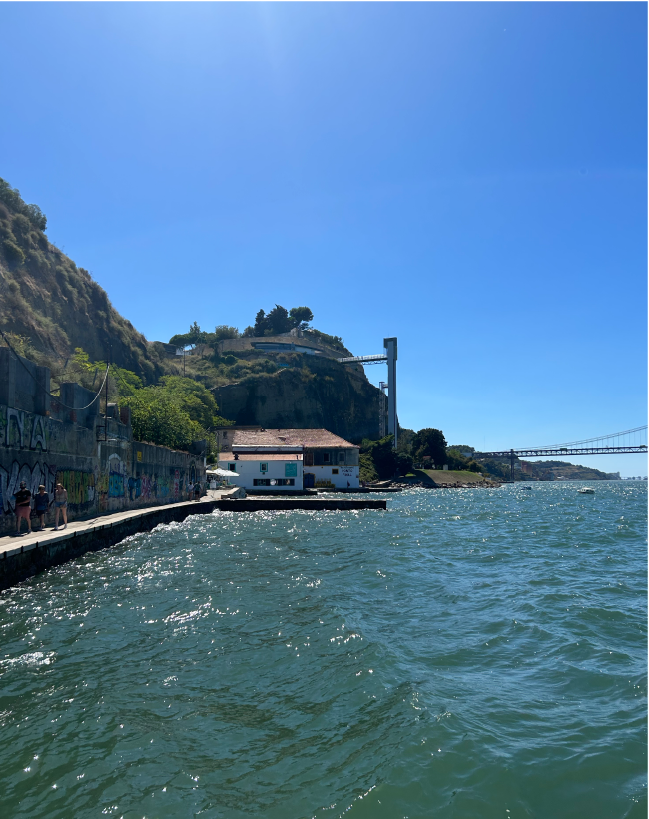
“There’s something tragic about something that was once beautiful but has lost its purpose.”
We exited the ferry and Fernanada made a b-line towards a thin path down the shore that led to a long series of dilapidated structures covered in graffiti. As we ducked under a sign warning of danger and crawled through an opening in the wall, it became clear that this building was not totally abandoned. The smells of meals cooking wafted out of the inner chasms of the place, with distant laughter and music reaching us, as well.
“Do people use these as sorts of art squats?” I asked.
“I don’t know if they’re ‘artists,’” she said. “But people live here, for sure.” She paused to take in the view and stroked the wall. “God, I love graffiti…. The first narrative art pieces in human history were cave paintings. The marks humans make on physical structures tell a story just as much as songs or poetry.”
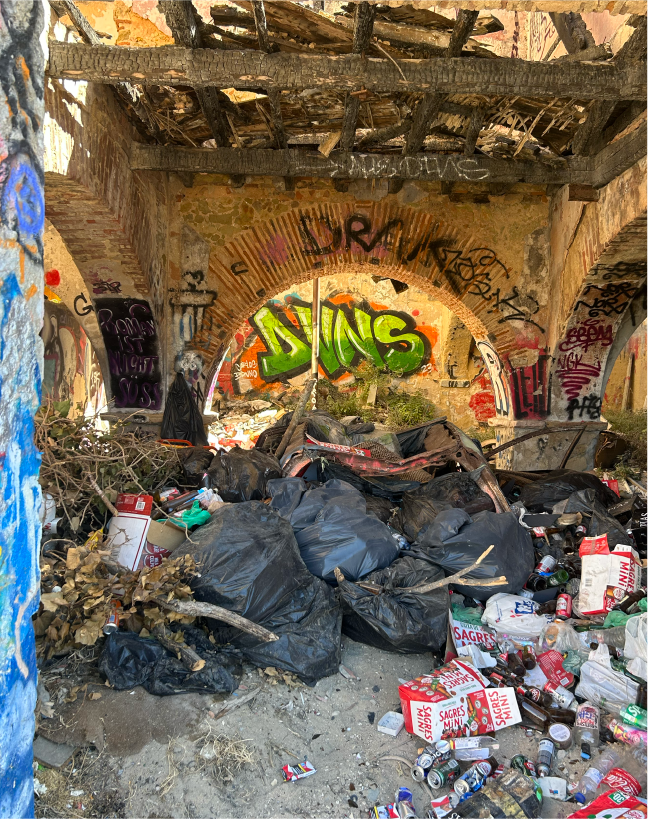
“Did you move from Rio to Lisbon for the architecture and physical history of the city?” I asked.
“Yes, I think so,” she said. “There are just so many stories here! There are a lot of stories in Rio, of course, but it’s so much newer. Europe is so much older. I was in Prague recently, and I drank a beer that was older than my country.”
“Of course a lot of the stories of Brazil were erased by Portuguese settlers,” I said. “Lisbon is younger than the civilizations that existed in Brazil that we just don’t know as much about.”
“Claro,” she said. “There’s world history then there’s recorded history. You can think about it in the micro or macro.”
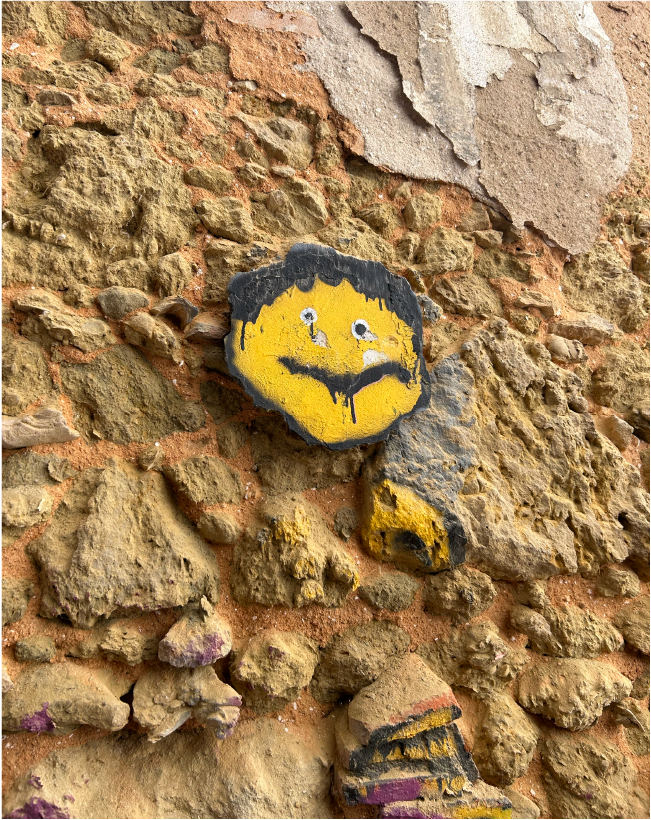
Portugal has recently seen its population increase dramatically, with an influx of Brazilians and Angolans. Like many European countries with dwindling birth rates, Portugal sees hope for its future through expanded immigration– choosing the citizens of countries it once colonized to be the main beneficiaries of this policy. These diasporas have given new life to Lisbon’s art and nightlife scenes, by means of young, energetic, and creative immigrants.
“Was the move from Rio to Lisbon difficult?” I asked.
“Sure, it was difficult,” she said. “It’s hard to change, but I’m attracted to travel. It’s good for writers to get out of our comfort zones and experience new points of view. It’s particularly interesting to look at Brazil from a distance, with nostalgia.”
“It’s hard to change, but I’m attracted to travel. It’s good for writers to get out of our comfort zones and experience new points of view.”
“Brazil is such a big film market with such a big economy,” I said. “Do you ultimately think there are more opportunities for you as a screenwriter here or there?”
“The film industry in Brazil is really strong,” she said, as we cautiously climbed a staircase to check out the view from a busted-out window. “Under Bolsonaro, there was more artistic repression, but the market is huge, regardless. In Lisbon, there’s less of a market, but there’s a bit less competition. Getting educated in Europe, whether or not it’s deserved, has a bit more clout than getting educated in Brazil.”
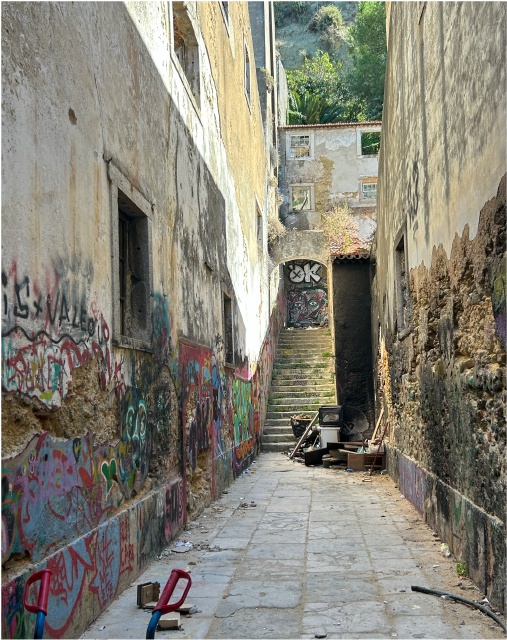
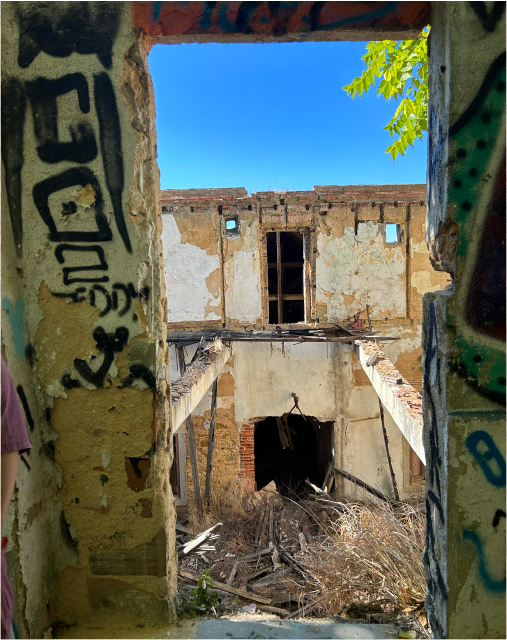
After a stern-looking man yelled at us in a language neither of us could decipher, we headed back to the ferry, on to our next location; Miguel Bombarda, an abandoned mental asylum in Arroios, Fernanda had heard of but never been to.
“How’d you first get interested in film,” I asked, as the ferry pulled out, and I realized we had again chosen the side with the subpar view. I tried my best not to be greedy.
“As a child I always liked narratives and stories. My father would read me Greek mythology as bedtime stories, and these memories are a huge part of myself. I wanted to write literature, but then I saw the movie Little Miss Sunshine. It really showed me the power of visual storytelling.”
Fernanda went on to get her bachelors in Cinematographic Studies, while also working as a subtitle translator. “I worked in subtitle translation for 10 years,” she said. “It gave me so much daily contact with script writing. I read every Brazilian film, before they even started filming. It helped me understand script writing, as a craft, as well as the film market in Brazil.”
Architecture aside, Fernanda’s main motivation for moving to Lisbon was to get her masters in Cinematographic Studies. “I worried that it would be repetitive from my bachelors,” she admitted. “But, it wasn’t. I made six short movies in two years.” One short film, O Rei Na Gaiola (The King in the Cage), that centers on a father/daughter relationship where the father has Alzheimer’s, went on to tour film festivals and receive critical acclaim.
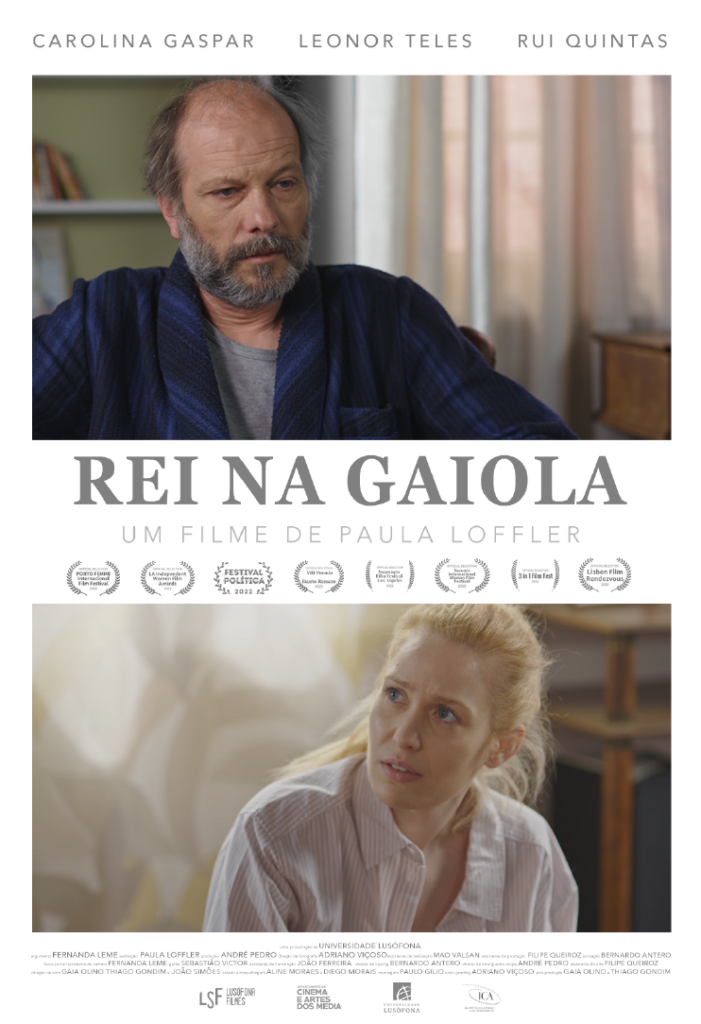
We exited the ferry and began hiking our way up the steep streets and alleys of Lisbon, towards Arroios.
“The director I was working with, Paula Loffler, and I crafted the script together,” Fernanda explained. “It was very personal to her, as her mother had Alzheimer’s. We wanted to encapsulate the emotional core of their relationship through an honest and subtle depiction of the disease. We started the story when the father was already quite progressed and moving into assisted living. Through flashbacks, we focused on their individual characters and relationship…I relied on Paula a lot to draw from her life and feelings, but also drew from my relationship with my own father, and experiences with mental health.”
“I see ‘memory’ as a throughline with a lot of your interests,” I said. “Why do you think that is?”
“Memory is character,” she said. “Memory can change your personality. Your memories make you, you. Paola’s mother had a life-long fear of flying, and when she reached a certain point in her disease she stopped having a problem with it. Our experiences, our trauma, our quirks, and talents, the meat of our brains can erase it all… Beyond that, memory is a huge part of cinema theory. The experience of the viewer is dependent on their individual life experiences.”
“It’s interesting that you’re also so attracted to the memories of objects and buildings,” I said. “In a way, the evidence of these inanimate objects is more reliable than ours. The rust, the graffiti, the artifacts, they all tell a story that can’t be distorted or lied about.”
“Human memories aren’t linear,” she said. “They aren’t reliable. They are just us trying to make meaning, and turn our lives into a story.”
Almost on cue, we stumbled upon a memorial for the long dead soldiers of a war neither of us had ever heard of.
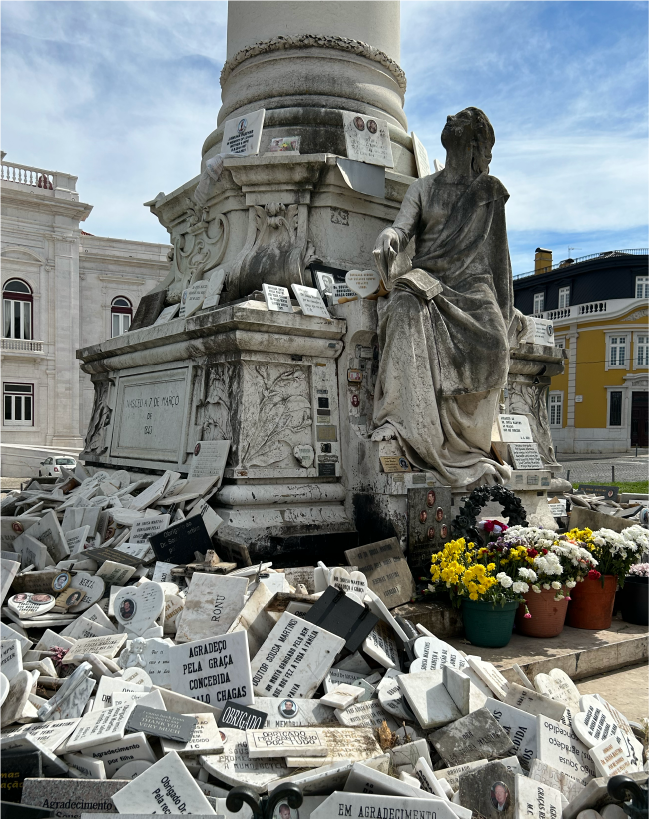
We kept hiking up and down and back up. My legs ached, but I didn’t want to look pathetic in front of Fernanda, who was cheerily scaling the cobblestones with ease.
“And what about the subject of mental health,” I asked. “What draws you to that?”
“Mental health is a part of all of our stories,” she said. “I struggle with intense anxiety, I have a brother who struggles with schizophrenia. Alcoholism, drugs, they’re all around us. Character building is ultimately rooted in psychology.”
“Do you have an ethos or social agenda in the exploration of this subject?” I asked.
“Mental health is a human issue that should be examined without prejudice,” she said. “Cinema has played a role in increased stigma, through negative representation. We don’t need to vilify the neurodivergent, they can serve a purpose in society and provide wisdom and unexpected perspectives. Our societies have not always looked down on these people. Shamans, artists, people who used to hold spiritual significance. These characters don’t need to be tied to violence, that connection isn’t even accurate. These are human beings trying to live their life. As a writer, I can place the narrative perspective closer to them, in order to shed light on their experiential reality. There’s a word in Portuguese, ‘loucura,’ that basically means, ‘madness,’ but it can have way less stigma attached to it, and maintains a lot of the same literary and historic connotations. I like to think of this word when looking at mental health through an artistic lens.”
“We don’t need to vilify the neurodivergent, they can serve a purpose in society and provide wisdom and unexpected perspectives.”
“You alluded to a personal connection to mental health,” I said. “How does that inform this process?”
“A personal connection to art is important, in general,” she said. “Paula was really able to work with the actor playing the father figure to nail the mannerisms of a person with Alzheimer’s. Also, the way I wrote the father character, I relied on my relationship with my father. It’s an artist’s duty to be vulnerable…I tied the story together with a nod to my father; we used to recite poetry to each other. I found this poem that encapsulated my relationship with him, and also acted as a mirror to the relationship between the father and daughter.”
Finally, we arrived at the shell of the Miguel Bombarda hospital. We searched for an opening, and weren’t able to find one.
“I heard about this from a blog post that was a few years old,” she said. “Maybe they’ve secured it.” We searched the periphery of the building, eventually finding one door, which we tried opening without luck. On its front we saw the words, “The Hospital: Inject Culture,” in hip backwards font. We looked at each other, puzzled for a second, until I spotted a torn-off wristband cast onto the ground bearing the same insignia.
“It’s been renovated into a nightclub!” I said, laughing. “That’s too perfect!”
“Oh,” Fernanda said, verging on devastated. “Why perfect?”
“It’s just what you’ve been talking about! The changed meaning of spaces, like the squatters in the buildings on the pier, new, ever-complicating stories!”
“Eh,” she said. “But I really wanted to see inside.”
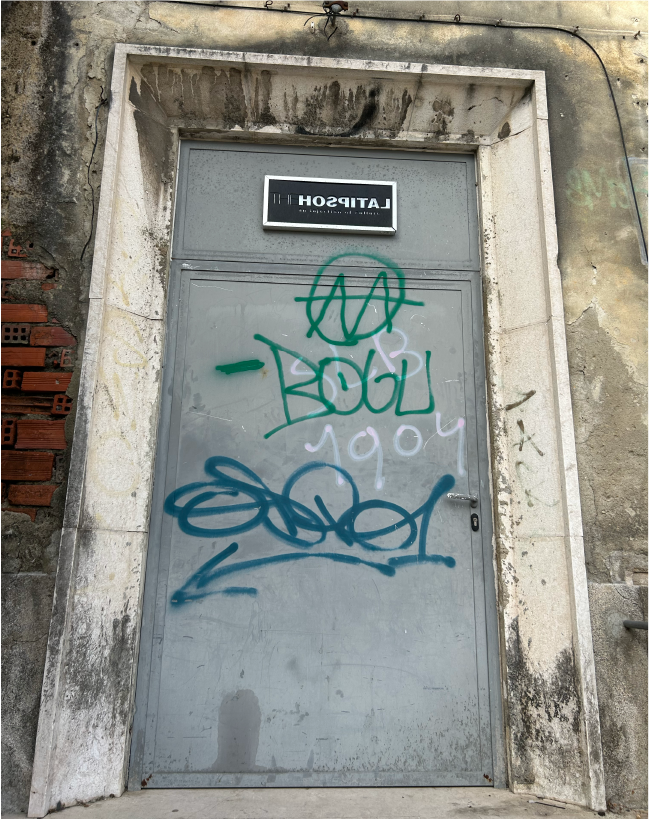
“F#@k it,” I said. “Let’s go get drunk.”
We ventured back down the hill, towards a wine bar Fernanda knew about. Once her wine glass was full, she was back to her normal cheery spirits. We joked and laughed, and looked through the photos we had taken throughout the day.
“Oh,” I said. “I forgot to ask. What was the poem?” She looked at me a bit confused. “The poem from your film, the one that reminds you of your dad.”
“Ohhh,” she said. “It came from a collection of old Japanese poems called Kokin Wakashu, that dealt with seasons and change. I think it went like, ‘O rouxinol…”
“I’m sorry,” I said. “Do you happen to know it in English? If not, it’s totally ok, obviously.”
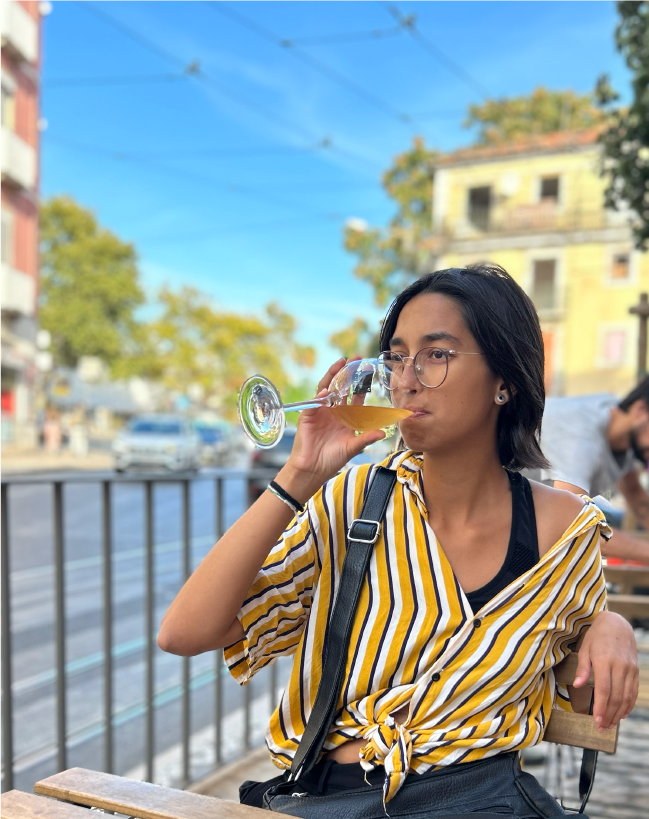
“Oh, sure, I think so. Just give me a second,” she said, pulling out her phone and fiddling with it for a minute before continuing:
The nightingale that comes and perches on the plum branch
sings as if it were summoning spring,
but the snowflakes continue to fall.
Everything around is dark,
and the snow continues to fall incessantly.
However, in my garden,
the nightingale has already begun to sing.



